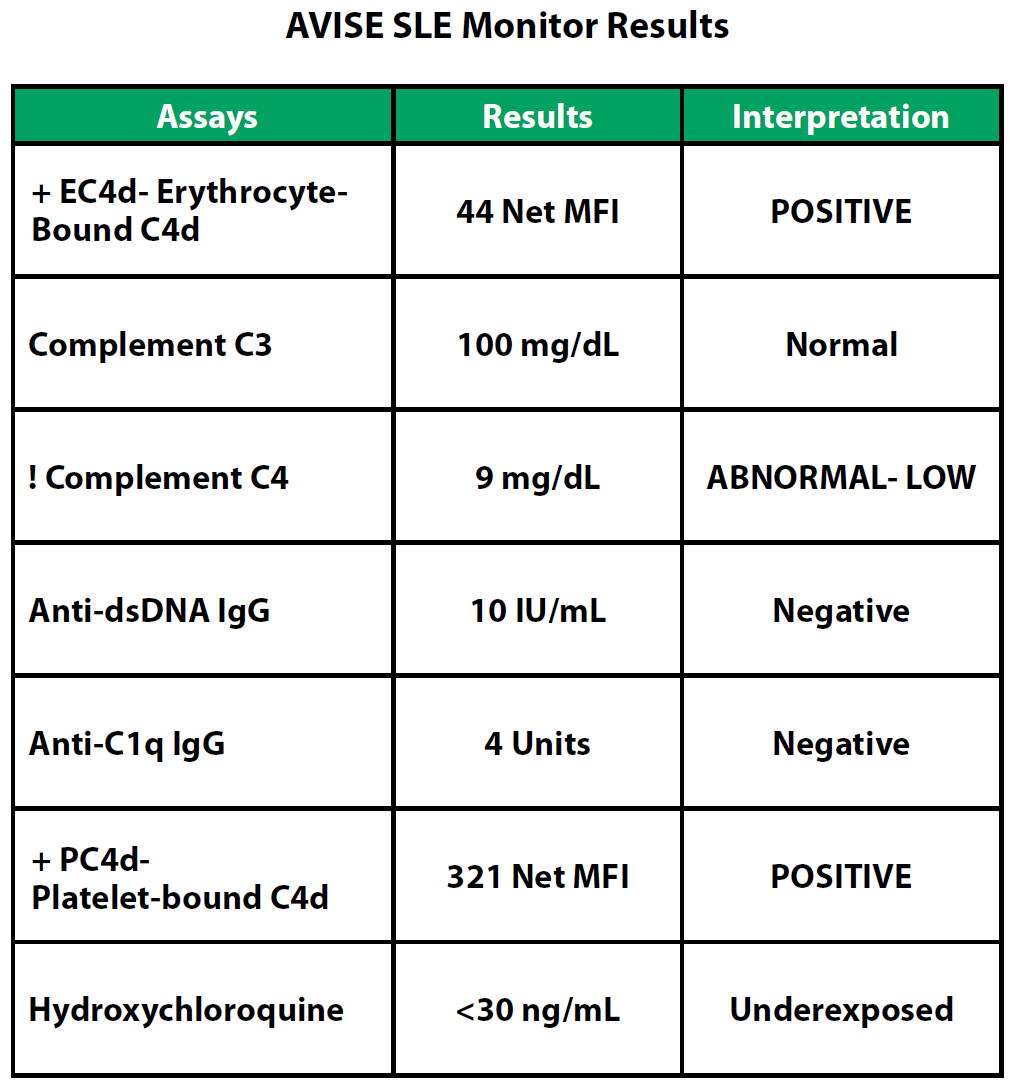New AVISE SLE Monitor Test Incorporates A Powerful Combination of Biomarkers to Provide Actionable Results

PRACTICAL APPLICATIONS
A 57-year-old African American female with SLE was under the care of Dr. Macalester and started complaining of worsening symptoms. The patient had a medical history of fatigue and idiopathic thrombocytopenia, which had been successfully treated using intravenous immune globulin (IVIG).
The patient also had a medical history of:
- Multiple miscarriages
- Pleural and pericardial effusions
- Thoracentesis revealed increased white blood count, 26% neutrophils but gram stain and culture were negative
- An axillary lymph node biopsy, which was complicated by a staph infection, showed reactive changes
- Bone marrow biopsy showed hypercellularity consistent with an atypical myeloproliferative disorder, which was treated using prednisone;platelet count came up to 148,000
- Volume loss in both lung bases, prednisone dose was increased to 20 mg
- No history of blood clots
- Musculoskeletal pain in the large muscle groups, as well as pain in her palms and distalinterphalangeal joints
Share this Post
FEATURE ARTICLE
Novel SLE Disease Activity Test - Case Study
LAB TECH HIGHLIGHT
Previous Labs
Previous labs revealed border-line positivity for IgG anticardiolipin and moderate positive for IgM
anticardiolipin. Additional labs also revealed, the
patient had ANA positivity at 1:1280 and anti-dsDNA
positivity. Lab results were also positive for: anti-RNP,
anti-SSA, anti-SCL-70 and anti-SMA.
However, the patient had consistently normal levels of soluble complement at every visit.
The patient had been treated with a combination of 200 mg hydroxychloroquine (HCQ) and tapered doses of prednisone. She was later placed on azathioprine,
with remarkable clinical improvement. Quinacrine was
briefly added for treatment of a skin rash.
Since being treated by Dr. Macalester, the patient
had been stable for over 4 years. To assess serological
evidence of disease activity, Dr. Macalester ordered the
AVISE SLE Monitor test and the AVISE HCQ test to help
assess adherence to 200 mg of HCQ.

Conclusion
Testing revealed EC4d and PC4d positivity as well as under exposure to HCQ. As a result, Dr. Macalester increased HCQ to 400 mg and reinforced the importance of adherence. The patient’s history of multiple miscarriages, positive anti-SCL-70, EC4d and PC4d suggested the patient may have SLE and APS overlap. This alerted Dr. Macalester to monitor the patient more closely for risk of thrombosis.
